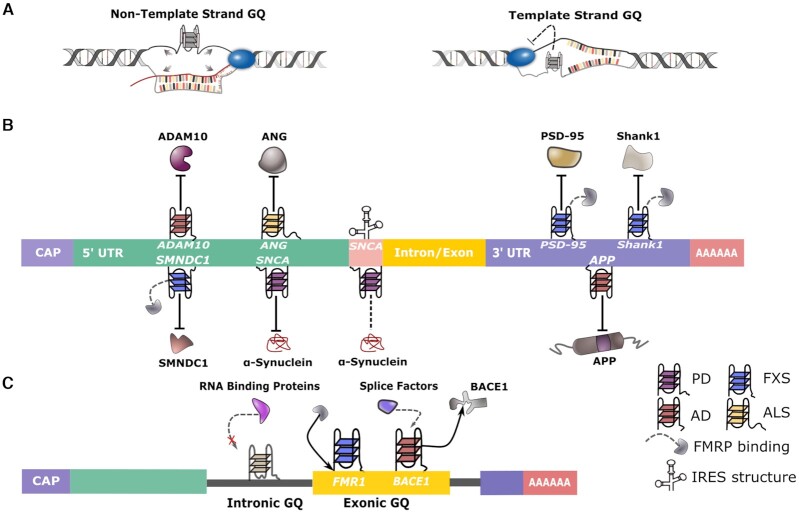Figure 2.
Proposed G-quadruplex regulation of biological processes. G4s regulate transcription, translation, and splicing. (A) Non-template strand G4s can regulate transcription by keeping the template strand single-stranded or by promoting formation of R-loops. Template strand G4s could regulate transcription by blocking RNA polymerase progression. (B) G4s found in mRNAs, particularly in regulatory regions such as the 5′-UTR, IRES and 3′-UTR, can potentially regulate the translation of proteins associated with AD, FXS, ALS and PD. G4s may influence both cap-dependent and cap-independent translation, and G4-interacting proteins such as FMRP are also involved. Arrows indicate inhibition of translation. (C) G4 motifs are found upstream and downstream of splice junctions. G4 structures may prevent access to RNA protein binding sites, mediate the binding of regulatory proteins such as FMRP, or recruit splice factors to influence alternative splicing, such as the selective generation of BACE1 isoforms.

